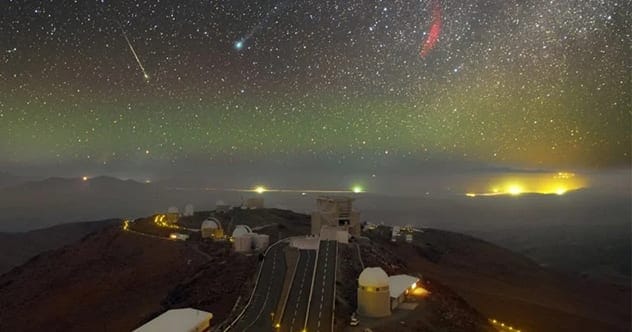The sky above us is a canvas painted with stars, planets, and a myriad of other celestial wonders. While some events are predictable, others are fleeting moments of rare beauty. Thanks to dedicated sky-gazers and advanced satellite technology, we’ve captured some truly breathtaking and unusual phenomena. Let’s explore ten of the most remarkable sky events ever photographed.
Jupiter’s Black Spot
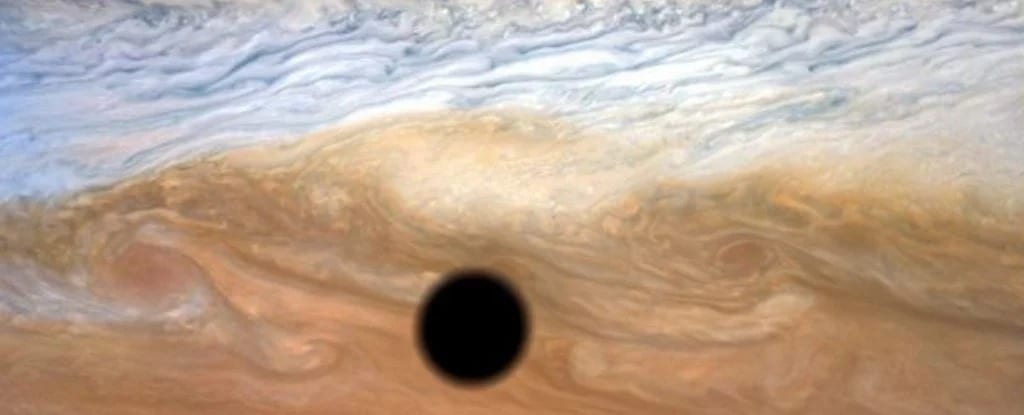
Jupiter is famous for its Great Red Spot, a colossal storm bigger than Earth. But what about a black spot? In 2019, NASA captured an image of just that. However, this wasn’t a new storm; it was a unique solar eclipse. Jupiter’s moon, Io, which is about the size of our Moon, passed between the Sun and Jupiter. If Jupiter were Earth-sized, it would have been a total solar eclipse. But because Jupiter is the largest planet in our solar system, Io only managed to cast a small, dark dot. The stark shadow of the moon against Jupiter’s vibrant colors created a stunning photograph.
The Star Of Bethlehem
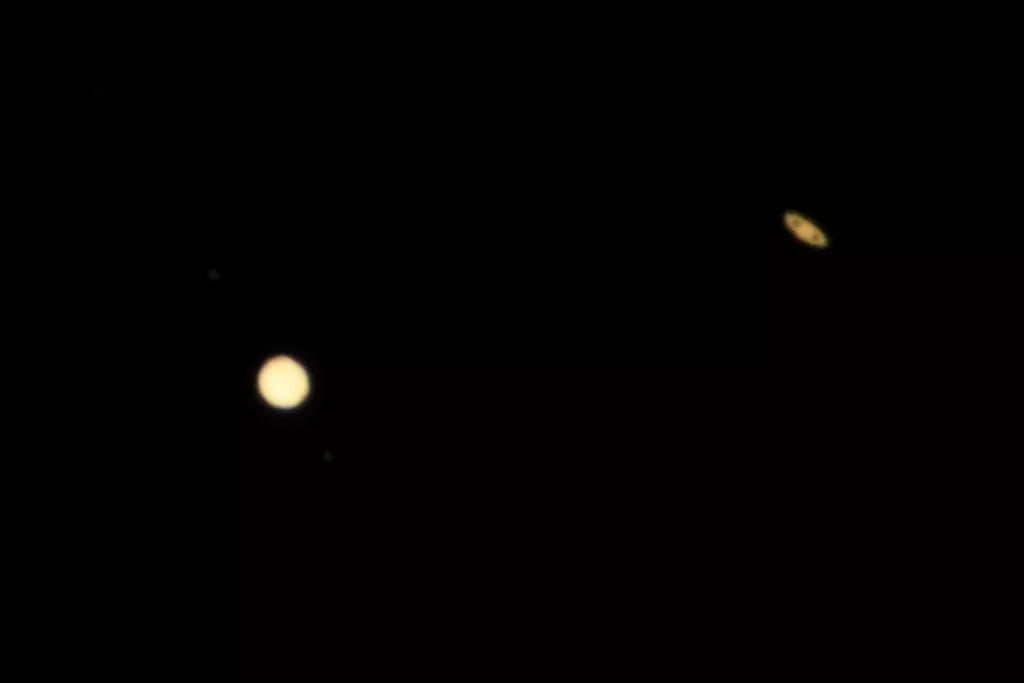
In December 2020, sky-gazers were treated to a rare sight: the near alignment of Jupiter and Saturn, often referred to as the “Star of Bethlehem.” These two planets lined up so closely that they appeared as a single, bright star in the night sky. One amateur photographer captured an exceptional image with a telescope and camera. Despite using relatively modest equipment, the photographer managed to capture the rings of Saturn with surprising clarity. As an added bonus, four of Jupiter’s moons were also visible, lined up neatly in the image.
A Full-Circle Rainbow
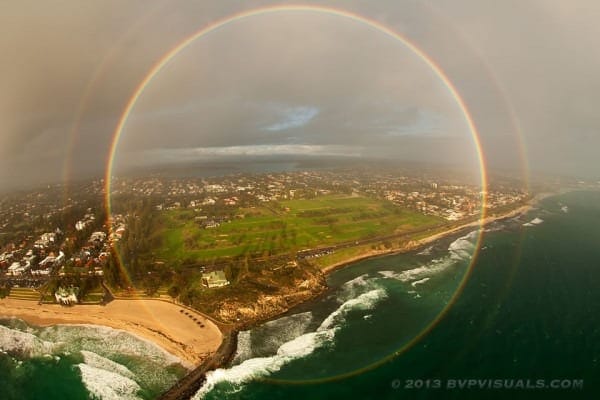
Most of the time, what people think are full-circle rainbows are actually different phenomena like sun halos. True rainbows happen when the sun is behind you and you’re looking towards rain. Full-circle rainbows have an extra rule: you need to be high up in the air to see one, making them incredibly rare. In 2013, a helicopter flying near Perth, Australia, passed between a shower and the setting sun. A photographer on board captured the elusive sight. Not only was there a full-circle rainbow, but it also had a faded mirror image framing it.
Rainbow Lightning
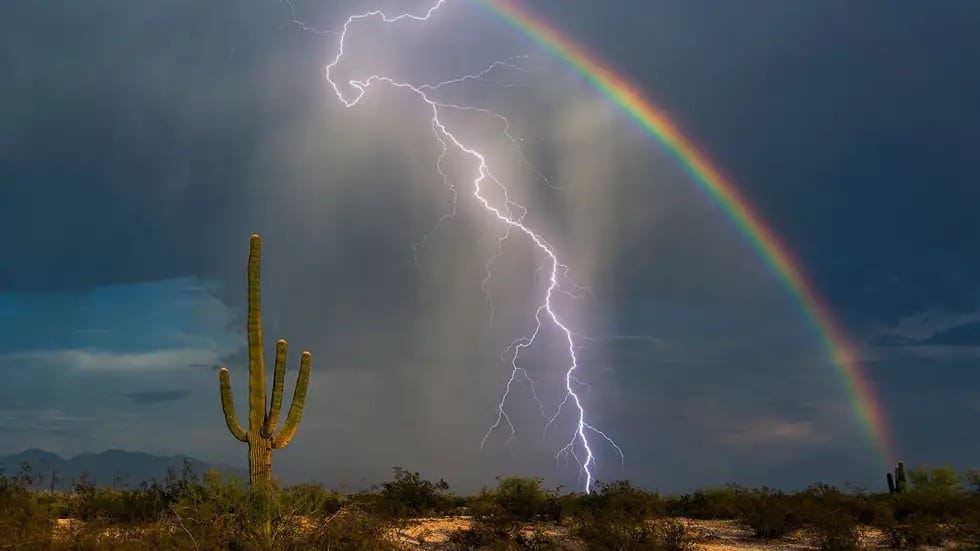
Rainbow lightning isn’t multicolored bolts. It’s the rare occurrence of capturing a rainbow with lightning in the same frame. It requires extreme luck to capture both phenomena together. Rainbows and lightning both need raindrops, but in different ways. Lightning happens when raindrops help create charged areas in clouds and on Earth. Rainbows appear when raindrops bend and scatter light. The photographer was in Arizona, facing a storm with the sun behind him. The setting sun’s angle created a rainbow, and at the same moment, a lightning bolt struck.
The Moon’s Shadow And A Hurricane
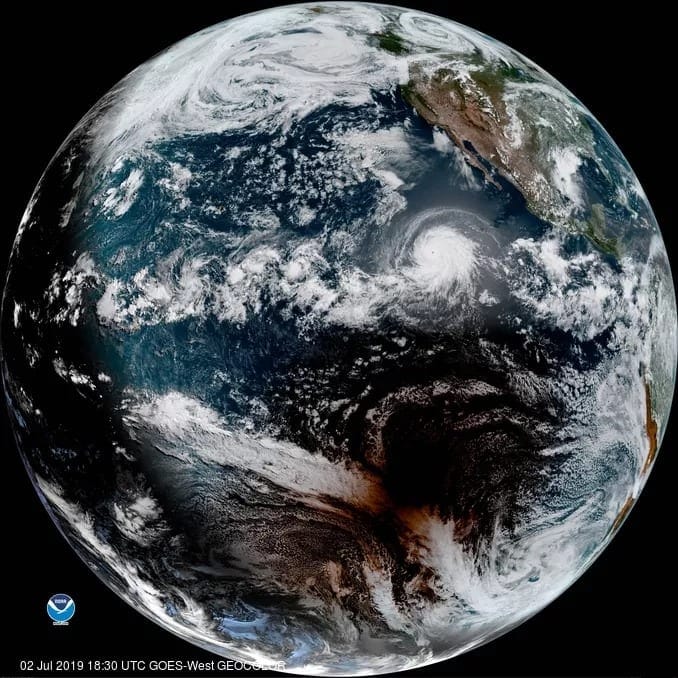
One of the best satellite images of 2019 came from GOES-West. In July, the weather satellite focused its cameras on the Pacific Ocean and captured Hurricane Barbara heading towards the United States. What made the image unusual was a dark mass floating in the south, almost directly below Barbara. This was the shadow of the Moon, cast upon the Earth during a solar eclipse, creating a rare and spectacular juxtaposition of events.
STEVE And NEOWISE (Plus Two Friends)
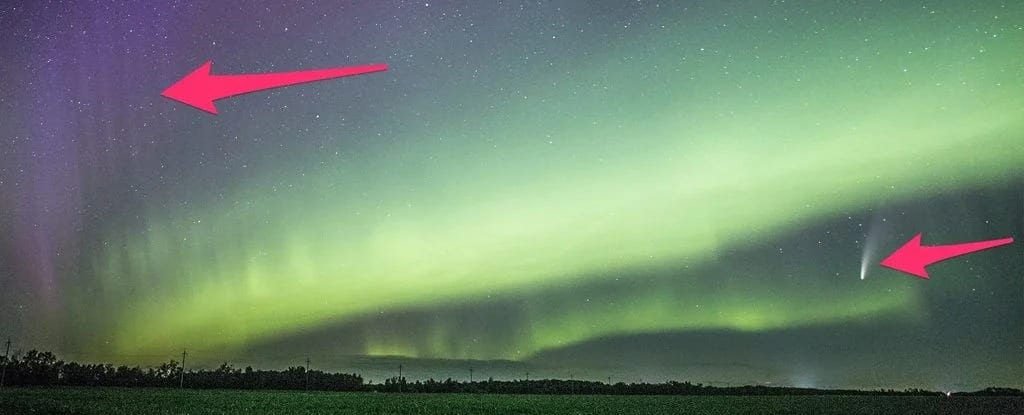
In July 2020, photographer Donna Lach aimed to capture the aurora lights and Comet NEOWISE together. NEOWISE was a celestial superstar, sporting two tails visible with binoculars. But Lach got more than she expected. Along with the aurora and NEOWISE, STEVE appeared. STEVE, or Strong Thermal Emissions Velocity Enhancement, is a mysterious purple aurora-like phenomenon. As if that weren’t enough, a meteorite streaked across the top left corner, making the image a once-in-a-lifetime capture.
Starlink Photobombed NEOWISE
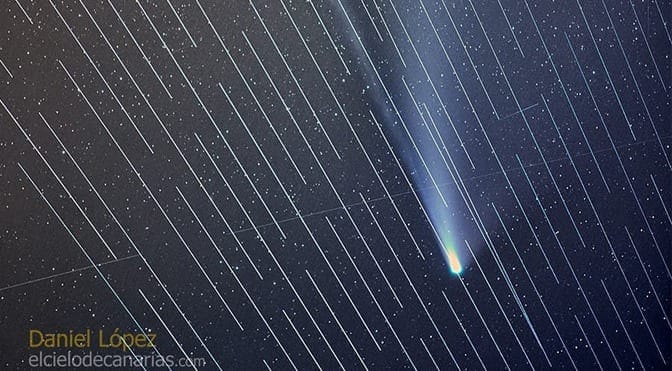
Comet NEOWISE was special because it won’t be visible from Earth again for another 7,000 years. When astrophotographer Daniel Lopez took a time-lapse image of NEOWISE, he captured the comet in great detail. However, the image was streaked with white lines, caused by SpaceX’s Starlink satellites passing by at the worst possible moment. While the satellites added an unintended element, they also highlighted the increasing presence of technology in our skies.
Six Celestial Phenomenon
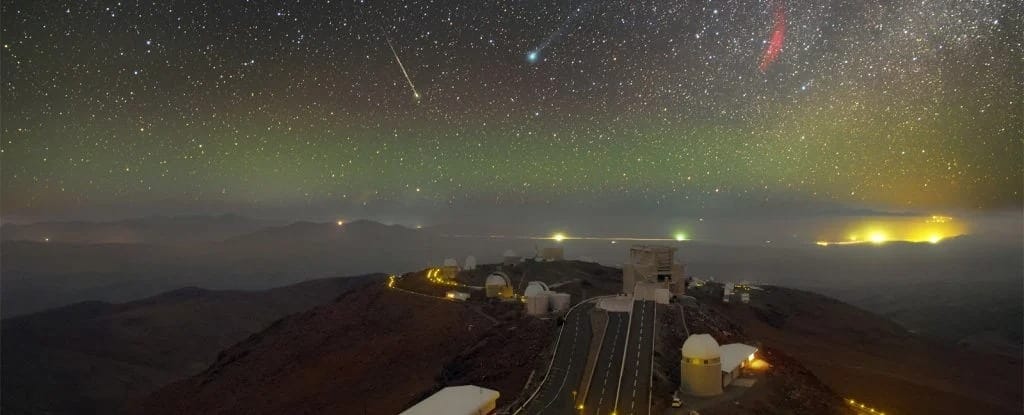
Creating this photograph took most of January 2015. An observatory in the Chilean Atacama Desert combined multiple photographs and long exposure to capture six celestial phenomena together. Comet Lovejoy, a star cluster known as the Seven Sisters, the California Nebula, and a meteorite were all captured in one frame. Additionally, a green haze from oxygen in the upper atmosphere and low-altitude clouds added to the spectacular scene.
Two Devastating Seasons
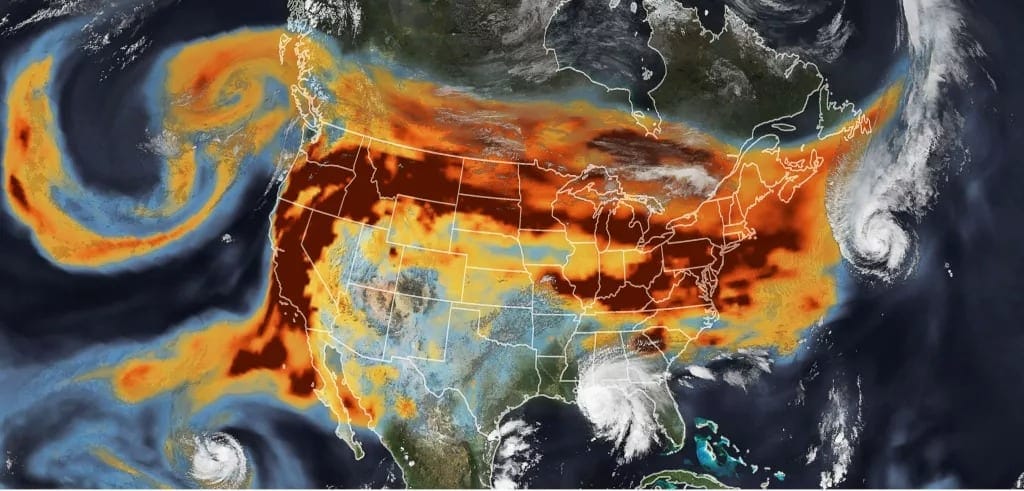
In 2020, America faced catastrophic weather. Wildfires in the West destroyed a record-breaking amount of land, while a severe hurricane season brought devastating floods. NASA satellites captured images of these two seasons interacting. A massive blanket of smoke covered the country, traveling from west to east, while several storms churned near the coastline. Hurricane Paulette even blocked the smoke from reaching the Atlantic Ocean until it dissipated.
The ISS Eclipse
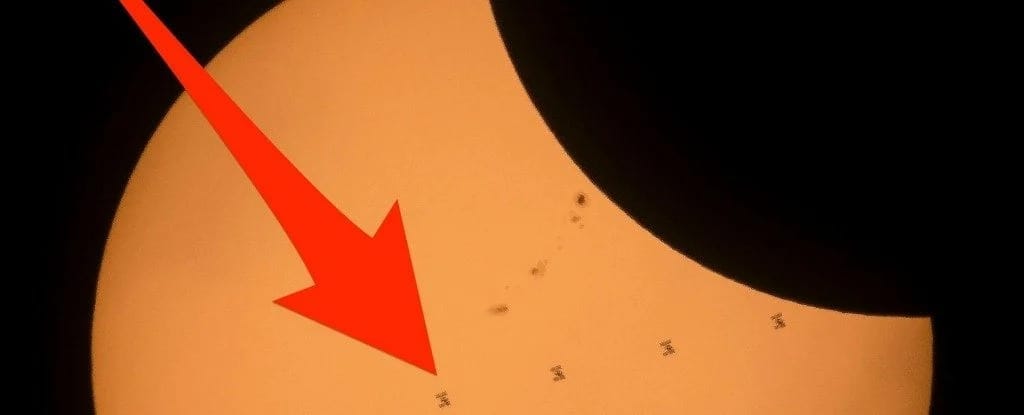
During the 2017 solar eclipse, NASA photographer Joel Kowsky aimed to capture something unique: the International Space Station (ISS) flying past the Sun at the exact moment of the eclipse. Capturing the ISS during an eclipse had never been photographed before. The ISS is relatively small and moves at 17,500 miles per hour. Kowsky took images at 1,500 photographs per second and created a composite image showing the ISS in different positions as it moved across the Sun.
These rare events remind us of the dynamic and ever-changing nature of our universe. From lunar shadows dancing on hurricanes to comets streaking past distant stars, the skies offer a continuous display of wonder and beauty.
Which of these rare sky events amazed you the most? Leave your comment below and share your thoughts!


